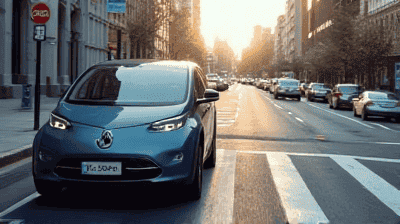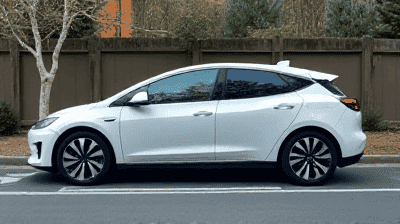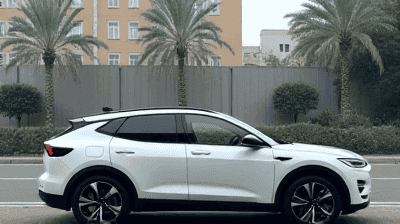
As urban areas continue to expand and traffic congestion rises, noise pollution has become a significant concern for city dwellers and policymakers alike. Traditional gasoline-powered vehicles contribute to high noise levels in urban environments, impacting well-being and public health. In response, electric vehicles (EVs) have emerged as a promising solution, offering a quieter alternative to conventional vehicles while also contributing to various forms of pollution control.
Noise pollution is defined as harmful or excessive levels of noise that interfere with normal activities such as sleep, conversation, and concentration. It can originate from a variety of sources, including:
Transportation: Vehicles, airplanes, trains, and ships generate significant noise, particularly in urban areas where their density is highest.
Construction Activities: Noise from construction sites can disrupt nearby residents and businesses.
Industrial Operations: Factories and manufacturing plants contribute to elevated noise levels, especially in industrial zones.
Urban Activities: Lively activities such as music festivals, nightlife, and public events can also contribute to ambient noise pollution.
The effects of noise pollution on human health and the environment are extensive:
Health Effects: Chronic exposure to high noise levels has been linked to various health issues, including stress, anxiety, hypertension, and hearing loss.
Sleep Disturbances: Noise pollution can disrupt sleep patterns, leading to insomnia and reduced overall health.
Impaired Cognitive Functions: Sustained exposure to noise can impair learning and memory functions, particularly among children.
Quality of Life Concerns: Elevated noise levels can diminish residents' enjoyment of their homes and neighborhoods, leading to decreased property values and community satisfaction.
Wildlife Disruption: Noise pollution can interfere with wildlife, disrupting their behaviors, habits, and even mating calls, which is detrimental to biodiversity.

Electric vehicles (EVs) are automobiles that are powered by one or more electric motors, using energy typically stored in batteries. Unlike internal combustion engine (ICE) vehicles, which rely on gasoline or diesel, EVs are driven by electric power, leading to significant differences in performance, efficiency, and noise production.
The reduced noise levels associated with electric vehicles can be attributed to several key factors:
Electric Motor Operation: Electric motors produce significantly less noise compared to internal combustion engines. The operation of an electric motor is smooth and quiet, generating minimal mechanical noise during acceleration and cruising conditions.
Absence of Exhaust Noise: Traditional vehicles generate significant noise from exhaust systems as a byproduct of combustion. EVs do not have exhaust systems, which leads to a marked reduction in noise pollution.
Fewer Moving Parts: Electric vehicles have fewer moving parts compared to conventional vehicles, resulting in reduced friction and wear. This contributes to less mechanical noise during operation.
Regenerative Braking: Many EVs utilize regenerative braking, which captures energy lost during braking and transforms it back into stored energy in the batteries. This system operates more quietly than conventional friction brakes.
Tire and Wind Noise: While tire and wind noise remain present in both EVs and ICE vehicles, the lower noise generated by the electric powertrain allows these other noises to be less pronounced in EVs.
To understand the impact of reduced noise levels quantitatively, it's helpful to consider decibel levels:
Internal Combustion Engine Vehicle: Average noise levels of a gasoline-powered vehicle can range between 70 to 80 decibels, especially at idle and during acceleration.
Electric Vehicle: In contrast, many electric vehicles operate in the range of 60 to 70 decibels, with some models producing even less noise at lower speeds.
The reduction in noise levels from EVs has several implications for urban environments.
The increased adoption of electric vehicles leads to lower ambient noise levels in urban environments. As cities transition from traditional gas-powered vehicles to EVs, the overall soundscape becomes quieter. This decline in noise pollution creates a more tranquil living environment, benefiting residents and supporting healthier urban ecosystems.
Reducing noise pollution has direct implications for public health. Quieter urban environments have been linked to lower stress levels, improved sleep quality, and reduced incidence of noise-related health issues. By decreasing the amount of noise that permeates neighborhoods, electric vehicles contribute positively to mental and physical well-being.
Electric vehicles contribute to a more enjoyable urban living experience. As noise levels decrease, residents can enjoy outdoor spaces, engage in recreational activities, and foster community interactions without the disruptive backdrop of traffic noise. Reduced noise pollution supports social engagement, connected communities, and vibrant public spaces.
Quieter urban environments are also beneficial for wildlife, as many species rely on sound for communication, navigation, and survival. By reducing ambient noise pollution, electric vehicles can help maintain biodiversity in urban areas, facilitating healthier ecosystems and habitats for various species.
The adoption of electric vehicles often aligns with other sustainable practices, such as the development of green public transportation systems and the promotion of cycling and walking in urban areas. All of these practices work in concert to reduce noise pollution while supporting more environmentally-friendly communities.

For the widespread adoption of electric vehicles, robust infrastructure is crucial. Several elements contribute to the successful integration of EVs into urban environments:
Developing an extensive charging network is vital for encouraging EV adoption. Key factors include:
Public Charging Stations: Cities should invest in accessible public charging stations to meet the growing demand for electric vehicles.
Home Charging Solutions: Encouraging the installation of charging points in residential areas can facilitate convenient charging for EV owners.
Workplace Charging: Businesses can provide charging facilities to support employees who drive electric vehicles, promoting greener commuting options.
Urban planners play a significant role in creating environments conducive to EV adoption. Considerations include:
Mixed-Use Development: Designing mixed-use neighborhoods can encourage walking and reduce reliance on vehicles, further lowering noise pollution.
Integrating Green Spaces: Incorporating parks and green areas into urban planning fosters recreational opportunities while mitigating noise pollution through natural sound barriers.
Pedestrian and Cycling Infrastructure: Creating attractive walking and biking paths can encourage alternative transportation methods without contributing to the noise generated by vehicles.
Governments and organizations can promote electric vehicle adoption through policy measures and incentives, including:
Tax Credits and Grants: Providing financial incentives for purchasing electric vehicles can stimulate demand and increase sales.
Low-Emission Zones: Implementing policies that restrict high-pollution vehicles in certain areas can encourage residents to opt for electric alternatives.
Public Awareness Campaigns: Educational campaigns can inform residents about the benefits of electric vehicles, fostering a shift toward cleaner transportation options.
While electric vehicles offer numerous advantages concerning noise reduction, several challenges may hinder widespread adoption:
The upfront cost of electric vehicles can be higher than that of traditional vehicles. While price parity is expected to improve, the initial investment may deter some consumers.
Concerns over battery range and the availability of charging infrastructure can create hesitation for potential EV users. Addressing these concerns through infrastructure development and public information campaigns is crucial.
The environmental impact of battery production and disposal also poses challenges. Ensuring responsible recycling processes for EV batteries is vital for reducing environmental harm.
While electric vehicles reduce noise pollution, their full environmental benefits are realized only when powered by renewable energy sources. Expanding renewable energy infrastructure is essential to maximize the sustainability of electric transportation.

The ongoing development of electric vehicle technology will likely continue to enhance noise reduction capabilities. Innovations may lead to even quieter vehicles and more efficient powertrains, minimizing noise pollution as the fleet evolves.
The growing diversity of electric vehicle models—including passenger cars, buses, trucks, and vans—will help facilitate a more extensive transition to cleaner transportation options, further reducing noise pollution across various settings.
As cities evolve into smart urban environments, electric vehicles will play a fundamental role in integrating transportation networks with advanced technologies. This integration can lead to optimized traffic flow, reduced congestion, and enhanced noise management.
Continued advocacy for policies that support electric vehicle integration, noise mitigation strategies, and public engagement in promoting EV adoption will be essential for fostering a quieter, healthier urban environment.
International collaboration on electric vehicle technology, infrastructure development, and policy-making can facilitate shared learning and best practices. This collective engagement will amplify the benefits of electric vehicle adoption globally.
Electric vehicles represent a transformative shift in how we approach transportation, offering a quieter, cleaner alternative to traditional gasoline-powered vehicles. Their capacity to reduce noise pollution has profound implications for public health, urban living, and overall quality of life. As cities evolve and adapt to embrace electric mobility, the potential for quieter urban environments becomes a reality.
By addressing barriers to adoption, investing in infrastructure, and fostering community engagement, we can pave the way for a more sustainable and peaceful future. Electric vehicles are not just a mode of transportation—they are a critical component of a broader movement towards healthier, quieter, and more vibrant urban spaces.